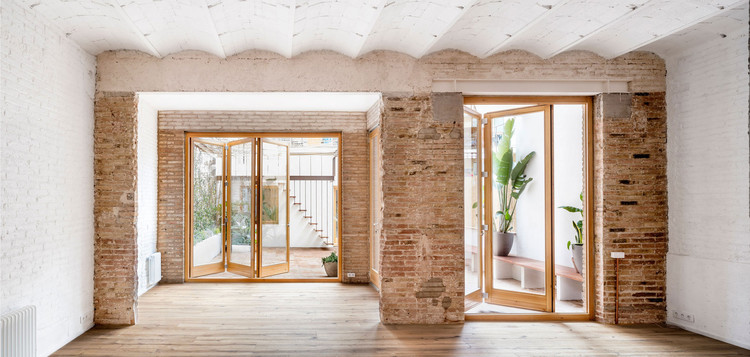
Interior gardens and plants produce many day-to-day benefits, like mood boosting and memory enhancing effects. Interior landscape design, also known as "plantscaping", is much more than the act of bringing plants indoors; it's actually about the strategic placement and selection of plant species within an architectural project to highlight and enhance aspects of spatial design.

Depending on the plant's structure and form, different spatial phenomena and effects can be generated.

For example, tall plants can be used in large spaces to produce focal hierarchies, or groups of plants can create areas for chilling out and/or resting. And, of course, vegetation can help control the thermal and acoustic performance of spaces.

In addition to the architectural complement that plants bring to interiors, they are also associated with promoting emotional and environmental benefits for living and working.

Here are some examples of projects that use "plantscaping" to achieve spatial, emotional and environmental effects.
Editor's Note: This article was originally published in December 2019 and updated in June 2021.
House in Chau Doc / NISHIZAWAARCHITECTS



Gallery-House / Carles Enrich




Artist Studio in Sonoma / Mork-Ulnes Architects



House 24 / Park + Associates




Taitung Ruin Academy / Marco Casagrande




Desert City / Garciagerman Arquitectos



Siu Siu – Lab of Primitive Senses / DIVOOE ZEIN Architects



SISII / Yuko Nagayama & Associates




LESS House / H.a
.jpg?1506954742)
.jpg?1506954750)
.jpg?1506954764)
House on Pali Hill / Studio Mumbai
.jpg?1506954596)
.jpg?1506954586)
.jpg?1506954607)
Casa Mipibu / Terra e Tuma Arquitetos Associados



Blue Bottle Coffee Nakameguro Cafe / Schemata Architects



Editor's Note: This article was originally published on December 26, 2017.



.jpg?1506954757)
_Image-MORKULNES-ARTISTSTUDIO-56201-PH_10_photo%C2%A9BruceDamonte.jpg?1506955584)



.jpg?1506954757)
_Image-MORKULNES-ARTISTSTUDIO-56201-PH_10_photo%C2%A9BruceDamonte.jpg?1506955584)
































